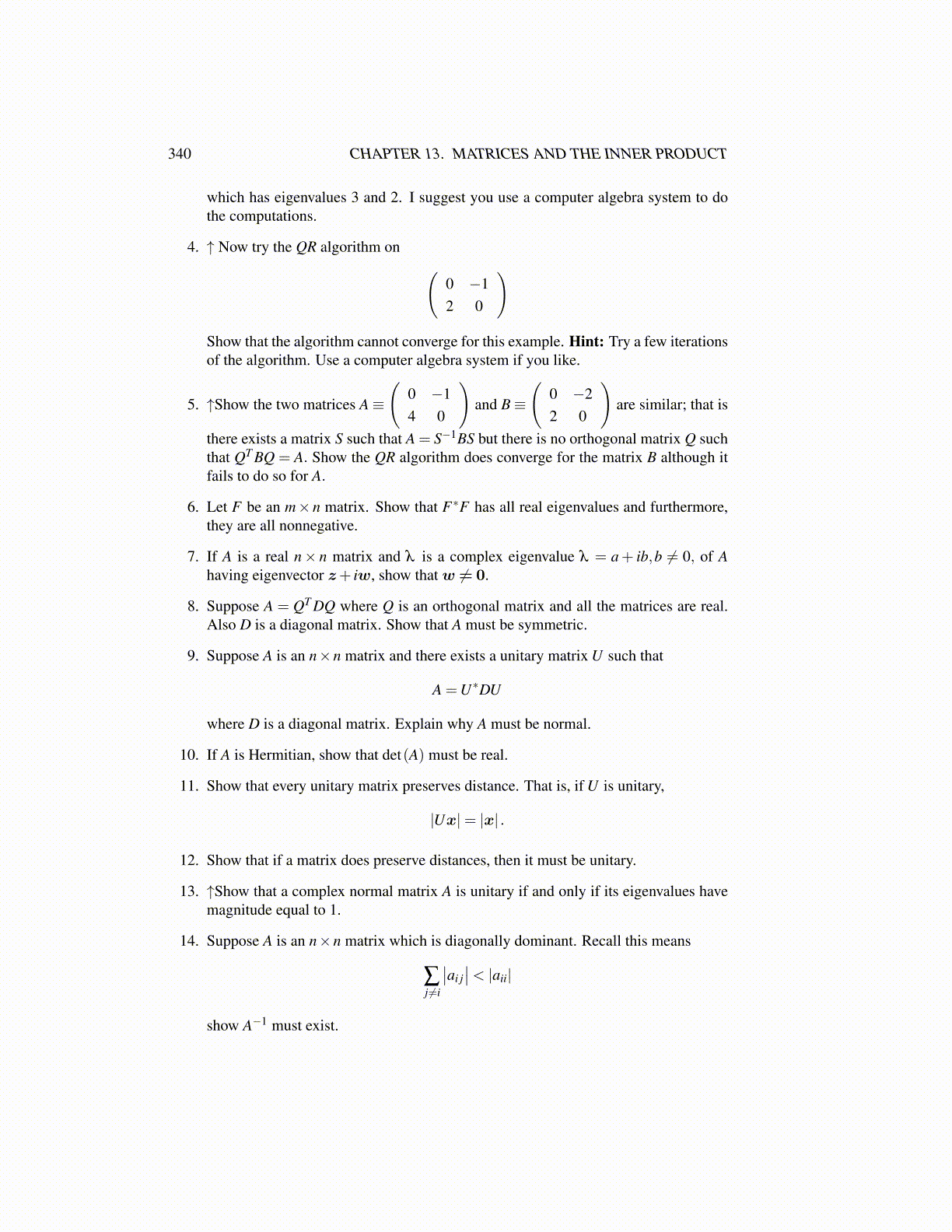
340 CHAPTER 13. MATRICES AND THE INNER PRODUCT
which has eigenvalues 3 and 2. I suggest you use a computer algebra system to dothe computations.
4. ↑ Now try the QR algorithm on (0 −12 0
)
Show that the algorithm cannot converge for this example. Hint: Try a few iterationsof the algorithm. Use a computer algebra system if you like.
5. ↑Show the two matrices A≡
(0 −14 0
)and B≡
(0 −22 0
)are similar; that is
there exists a matrix S such that A = S−1BS but there is no orthogonal matrix Q suchthat QT BQ = A. Show the QR algorithm does converge for the matrix B although itfails to do so for A.
6. Let F be an m×n matrix. Show that F∗F has all real eigenvalues and furthermore,they are all nonnegative.
7. If A is a real n× n matrix and λ is a complex eigenvalue λ = a+ ib,b ̸= 0, of Ahaving eigenvector z+ iw, show that w ̸= 0.
8. Suppose A = QT DQ where Q is an orthogonal matrix and all the matrices are real.Also D is a diagonal matrix. Show that A must be symmetric.
9. Suppose A is an n×n matrix and there exists a unitary matrix U such that
A =U∗DU
where D is a diagonal matrix. Explain why A must be normal.
10. If A is Hermitian, show that det(A) must be real.
11. Show that every unitary matrix preserves distance. That is, if U is unitary,
|Ux|= |x| .
12. Show that if a matrix does preserve distances, then it must be unitary.
13. ↑Show that a complex normal matrix A is unitary if and only if its eigenvalues havemagnitude equal to 1.
14. Suppose A is an n×n matrix which is diagonally dominant. Recall this means
∑j ̸=i
∣∣ai j∣∣< |aii|
show A−1 must exist.